#Horatio London
Text
Hein Feinbrot's Christmas Gift Guide 2023
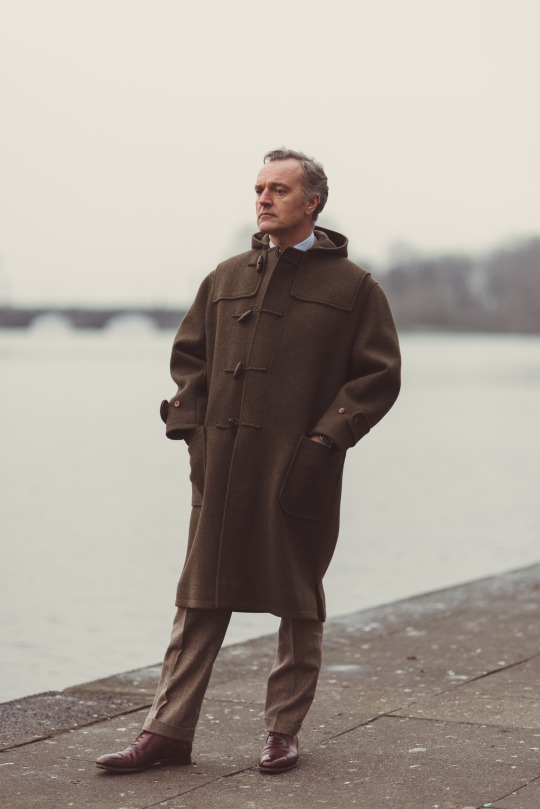
Ladage & Oelke Dufflecoat

Anton Meyer 'Romulus' Tweed jacket

Natalino Undyed Jumbo Herringbone Wool/Cashmere Jacket

Drake's Ecru Boucle Wool Zip Fleece Vest

Fabian Zug English Suede Chelsea boots

Anglo-Italian Company Mid Wash Denim

Drake's Pink Brushed Shetland Mock Neck Jumper

Horatio 'Beaufoy' Black Grain Horsebit Loafers
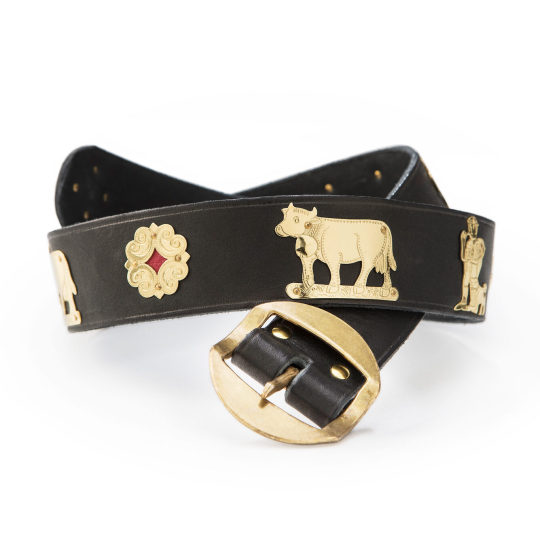
Appenzeller Gurt Classic Belt
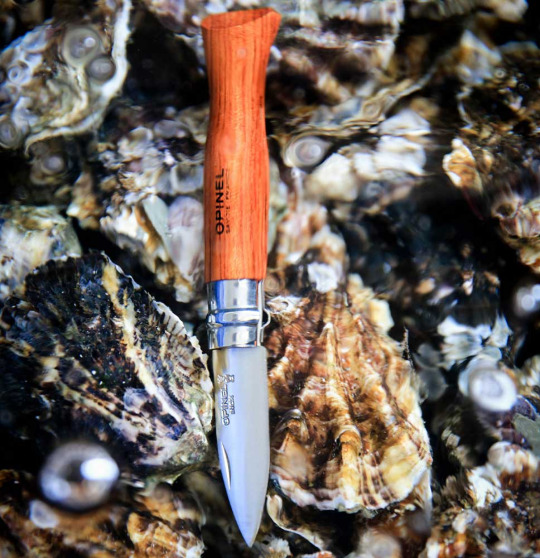
Opinel No. 9 Oyster knife
#Menswear#Gift Guide#Gift Guide 2023#Ladage & Oelke#Anton Meyer#Fabian Zug#Drake's#Drake's London#Natalino#Opinel#Anglo-Italian#Anglo-Italian Company#Horatio London#Appenzeller#Appenzeller Gurt#Appenzell Belt
31 notes
·
View notes
Text

The Lion in Winter - Trafalgar Square, London
#Trafalgar Square#Nelson's Column#London#Horatio Nelson#bronze lions#Edwin Landseer#naval victory#British history
3K notes
·
View notes
Text

34 notes
·
View notes
Text

Digby has spent a normal amount of actions just fucking looking at people in the Evenlode, please someone give this old man glasses
3 notes
·
View notes
Text
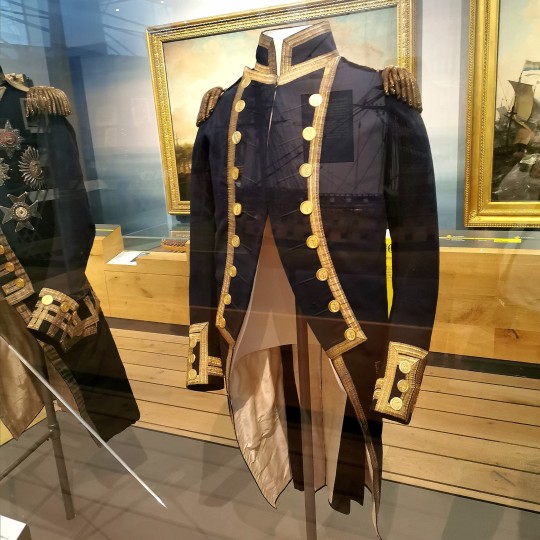



oceans are now battlefields ⚓ national maritime museum, greenwich
#national maritime museum#greenwich#London#age of sail#napoleonic wars#horatio nelson#master and commander#aubreyad#jack aubrey#stephen maturin#patrick o'brian
16 notes
·
View notes
Text
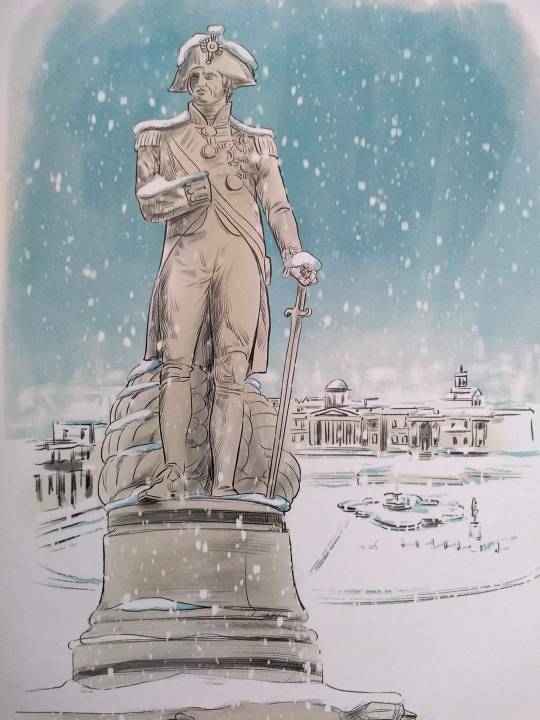
Winter in Trafalgar Square, by The Nelson Society UK.
#horatio nelson#trafalgar square#nelson's column#winter#snow#christmas#royal navy#london#the nelson society
18 notes
·
View notes
Text
Hamlet by the River!
Pre-show drinks before HAMLET + Ian McKellen and Director Sean Mathias live for a q and a. Useful for my upcoming tour of ‘Hamlet – Horatio’s Tale’ with Sir Derek Jacobi!

View On WordPress
#Hamlet#Horatio’s Tale#London#London Literary Pub Crawl.com#Riverside Studios#Sir Derek Jacobi#Sir Ian McKellen#theatre#Writers
1 note
·
View note
Text
Nelson's Column
On this date in 1843 Nelson's Column was completed. Nelson's Column is a monument in Trafalgar Square in central London built to commemorate Admiral Horatio Nelson, who died at the Battle of Trafalgar in 1805.
10 things you didn't know about Nelson's Column:
1 note
·
View note
Text
History - Captain Horatio Hornblower
After the victory of a British fleet (commanded by Lord Horatio Nelson) over a French-Spanish fleet (commanded by Pierre de Villeneuve) at Trafalgar, Britain „ruled the waves“ for over a century - and London was the centre of that power. The 12 Hornblower novels from C.S. Forester and the movie „Captain Horatio Hornblower“ describes the seafaring life aboard a warship at those times. For sure one of the triggers to visit London one time to deep dive in those historical times.
youtube
Naval Battle Scene 1
youtube
Naval Battle Scene 2
Sea battle scenes from the movie „Captain Horatio Hornblower“. The movie scenes show vividly what contributed as well to Nelson's success at Trafalgar: Nelson was able to outmaneuver the superior enemy fleet since the British ship crews were more capable (they were more skilled in the rigging and were able to fire more rounds with their cannons). Nelson's feat was to find a tactic that would best utilize his people's abilities.
-Simplicius Simplicissimus
#traveling#reisen#england#london#movies#filme#captain horation hornblower#des königs admiral#horatio hornblower#horatio nelson#gregory peck#simplicius simplicissimus#history#geschichte#books#bücher#Youtube
0 notes
Text
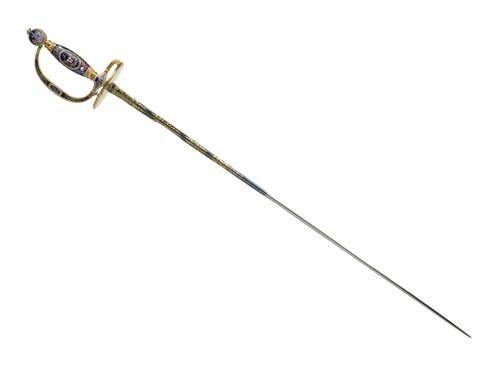


Smallsword presented to Admiral Horatio Nelson from the Corporation of London in 1800
from The City of London Museum
425 notes
·
View notes
Text


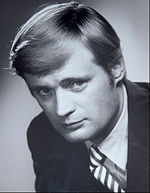
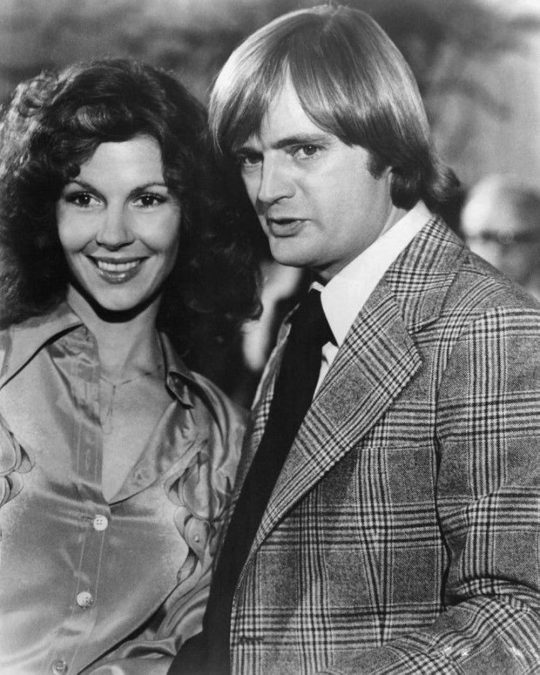
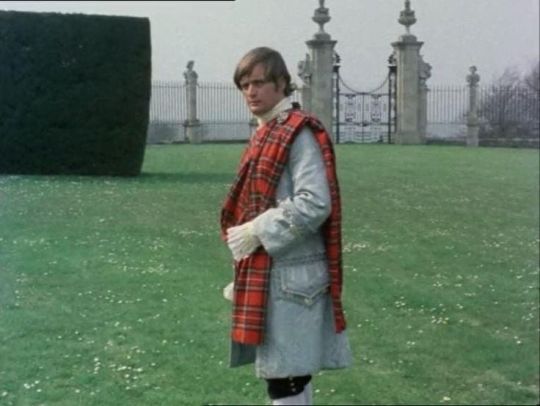
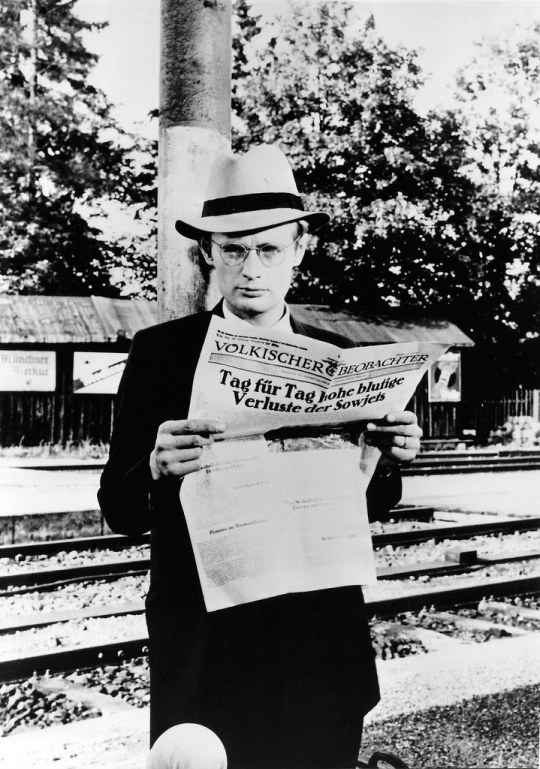
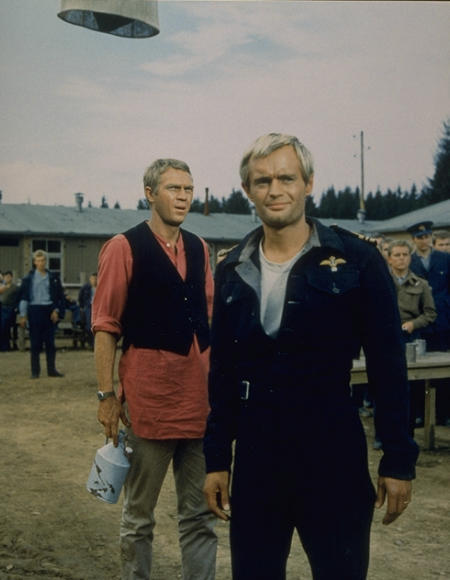
Happy 90th Birthday Scottish actor David McCallum.
Born as David Keith McCallum, Jr on this day 19933 in Maryhill, Glasgow, the second of two sons of Dorothy Dorman, a cellist, and orchestral violinist David McCallum Sr. When he was three, his family moved to London for his father to play as concertmaster in the London Philharmonic Orchestra. Early in the Second World War, he was evacuated back to Scotland, where he lived with his mother at Gartocharn by Loch Lomond.
McCallum won a scholarship to University College School, a boys' independent school in Hampstead, London, where, encouraged by his parents to prepare for a career in music, he played the oboe.In 1946 he began doing boy voices for the BBC radio repertory company. Also involved in local amateur drama, at age 17, he appeared as Oberon in an open-air production of A Midsummer Night's Dream with the Play and Pageant Union. He left school at age 18 and was conscripted, joining the 3rd Battalion the Middlesex Regiment, which was seconded to the Royal West African Frontier Force.In March 1954 he was promoted to Lieutenant. After leaving the army he attended the Royal Academy of Dramatic Art (also in London), where Joan Collins was a classmate.
David McCallum’s acting career has spanned six decades; however, these days he is best known for his starring role on the police procedural NCIS as medical examiner as Dr. Donald “Ducky” Mallard. I first really remember McCallum for his role in another US show, The Invisible Man which ran for 13 episodes in the 70's. McCallum by then was a veteran of many TV and Film roles, starting in the 50's including Our Mutual Friend and The Eustace Diamonds, in the 60's he was in several ITV Playhouse shows before moving across the Atlantic to take roles in The Outer Limits and his big break as Illya Kuryakin in several incantations of The Man from Uncle.
His most notable films were The Greatest Story Ever Told as
Judas Iscariot and of course Ashley-Pitt 'Dispersal' in The Great Escape.
As well as the aforementioned Invisible Man in the 70's he took time to pop back over to our shores to star in two quality series, as Flt. Lt. Simon Carter in Colditz and Alan Breck Stewart in an adaption of Robert Louis Stevenson's, Kidnapped.
The 80's saw him team up with the lovely Joanna Lumley in Sapphire & Steel and several guest roles in the likes of The A Team, Hart to Hart and Murder, She Wrote as well as a one off reprise of Illya in the TV movie The Return of the Man from U.N.C.L.E.: The Fifteen Years Later Affair.
The 90's saw David in Cluedo and Trainer on our TV screens over here and American science-fiction series VR-5 in the states..
During the last 20 years or so he has been in the kids TV show, Ben 10: Omniverse as the voice of Professor Paradox and of course Donald Horatio "Ducky" Mallard in over 350 episodes of the popular NCIS.
David has been married twice. He married his first wife Jill Ireland in 1957. They met on the set of the movie Hell Drivers. Together, they had two sons and a daughter, Paul, Jason and Valentine, with Jason being the only one who was adopted. In 1963, David introduced Jill to his co-star on The Great Escape, Charles Bronson, and she left David and married Charles in 1968. In 1967, David married Katherine Carpenter and they have two children together, a son Peter and a daughter, Sophie. He and Katherine currently live in New York.
In NCIS since 2018, Ducky, played by McCallum, has appeared in fewer episodes. avid McCallum explained that appearing in fewer episodes will allow him to see more of his family, which includes his wife, children, six grandsons, and their cat, Nickie. According to IMDB he has chalked up an amazing 457 appearances in the show, morethan anyother character in the series.
138 notes
·
View notes
Text
The Battle of Trafalgar - a brief timeline
At 6am on 21 October 1805, the two fleets sighted each other and at 6.40am Nelson gave the order to ‘prepare for battle’. The French were sailing in line off Cape Trafalgar, while the British came in from the west, gradually forming two lines. The British fleet was outnumbered, the enemy totalling nearly 30,000 men and 2632 guns to Nelson’s 18,000 men and 2148 guns.

Plan of Lord Horatio Nelson's attack strategy (1758-1805), on the combined fleet (France and Spain), October 21, 1805 (Battle of Trafalgar). Lithograph (27 x 36.7 cm), published by Robert Dodd, 1805, England
At 11.45am Nelson ordered a special signal to be flown from his flagship Victory. It read: ‘England expects that every man will do his duty’. The signal was greeted with delight by the fleet.
Finally, at 11.50am, French commander Pierre-Charles-Jean-Baptiste-Silvestre de Villeneuve sent the signal ‘engage the enemy’. The French vessel Fougueux fired the first shots at Vice-Admiral Cuthbert Collingwood’s flagship, Royal Sovereign. The battle had begun. Collingwood was the first to reach the enemy line, firing a broadside into one of the Spanish flagships, Santa Anna. The ships in his division followed him, approaching in a slanting line, spreading the force of the impact and enveloping the allied rear as Nelson had intended.
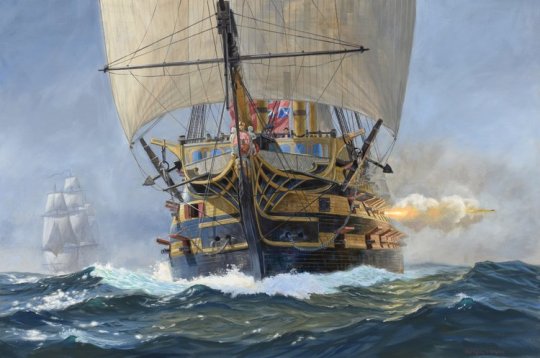
HMS Victory, by Patrick O'Brien (1960-)
Nelson meanwhile headed towards the great Spanish ship, Santissima Trinidad, but spotting that Villeneuve was flying his flag on the Bucentaure, the next ship astern, he ordered Flag Captain Thomas Hardy to attack her first. The Victory passed under the stern, firing a broadside as she went, giving the Bucentaure a knockout blow.
As the Victory moved on she became entangled in the Redoutable, and the two ships drifted away. This created a large gap in the Franco-Spanish line through which Nelson’s division then poured, splitting the enemy fleet in two – again, exactly as Nelson intended.

Breaking the Line, by Patrick O'Brien (1960-)
The battle developed into a ferocious pounding match but the British had the advantage thanks to Nelson’s strategic pre-planning and the fact his men were better trained in delivering rapid, accurate gunnery. When firing finally ceased at 5.30pm, 17 enemy ships had been captured and another was a blazing wreck. Four managed to escape but were captured a few weeks later, and 11 managed to struggle back to Cadiz.
A total of 449 British sailors were killed and 1217 wounded. French and Spanish losses were heavier: 4408 were dead, 2545 wounded and some 20,000 taken prisoner.
Britain’s decisive victory was overshadowed by news of the death of Nelson, who was shot onboard Victory at 1.15pm and died at 4.30pm. The triumph was further eclipsed by a fierce storm that raged after the battle, forcing the British to abandon most of their captured enemy ships.

The Battle of Trafalgar, 21 Ocotober 1805, by unknown
News of Trafalgar reached London a fortnight later in the early hours of 6 November 1805. Public rejoicing for the victory was muted by widespread sorrow for the death of Nelson. As a reward for Trafalgar, Collingwood was made a baron, all the captains received the official Naval Gold Medal and a special grant of money was made by the government to all those who had taken part. This was to compensate them for the prize money they lost when their captured vessels sank in the storm.
The Battle of Trafalgar cemented Britain’s reputation as ruler of the seas and demonstrated that the Royal Navy had superiority in training, professionalism and expertise in naval tactics that set it apart from its rivals. By 1809 there were over 140,000 men serving on 732 ships, more than ever before.
However, the victory at Trafalgar had little overall impact on the course of the war. Napoleon needed more to be stopped.
#naval history#battle of trafalgar#21 october 1805#trafalgar day#brief timeline#19th century#age of sail
75 notes
·
View notes
Text
THIS DAY IN GAY HISTORY
based on: The White Crane Institute's 'Gay Wisdom', Gay Birthdays, Gay For Today, Famous GLBT, glbt-Gay Encylopedia, Today in Gay History, Wikipedia, and more … February 16


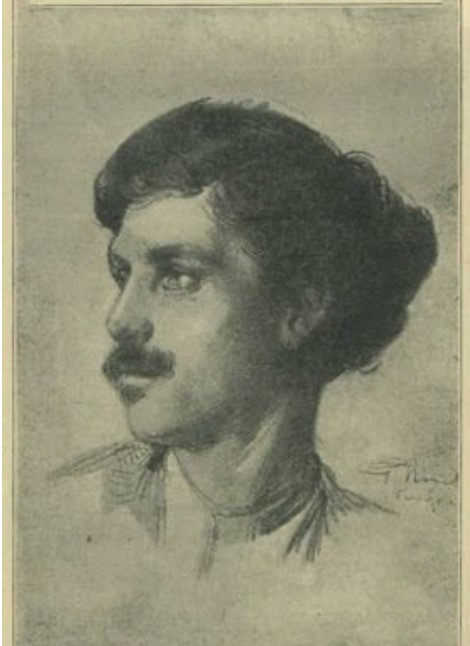
1854 – The Scottish writer and historian best known for his two volume Studies in the History of Venice, Horatio Forbes Brown, was born (d.1926). Alas, poor Brown. When the English writer died in 1926, his executors burned almost all his unpublished works, attempting to hide what his acquaintances already knew - that he was homosexual. Like the tastes of so many of his upper-class colleagues, and his close friend John Addington Symonds, Brown's ran to sailors, footmen, tram conductors, and other strapping members of the lower orders.
In 1879, Brown and his mother decided to live in Italy. They went first to Florence and then settled at Venice, taking an apartment in the Palazzo Balbi Valier on the Grand Canal. Symonds joined his friend Brown for holidays in Venice, when they liked to drift through the lagoons in Brown's sandolo (a smaller version of the gondola), called Fisole, which had orange sails decorated with a fleur-de-lis.
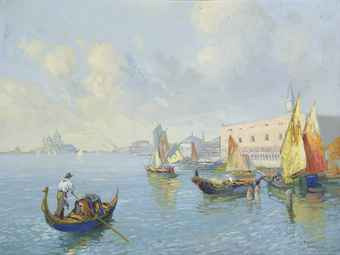
Venice in the 1800s
In 1885, the Browns bought a tall, narrow, tenement building on the Zattere looking down the Giudecca Canal and reconstructed it as a house called Cà Torresella. Brown's close friend Antonio Salin, his gondolier, also lived in the house with his wife and family.
In 1889, Brown took a job working for the British government's Public Record Office on Venetian state papers. From 1889 to 1905 he spent his mornings producing calendars covering the years from 1581 to 1613. In the afternoons he would go out and about with his gondolier, Salin. Brown's name as an historian was made by the five volumes of Calendar of State Papers (Venetian) which he published between 1895 and 1905.
The receptions he gave at home on Mondays were described by Frederick Rolfe, known as Baron Corvo.
Brown's friend Symonds appointed him his literary executor, so that in 1893 when Symonds died Brown received all his private papers. He went on to publish John Addington Symonds, a Biography (1895), followed in 1923 by Letters and Papers of John Addington Symonds. In both, he suppressed almost all of Symonds's homosexuality, and in Brown's own Will he left orders for the destruction of the papers, apart from Symonds's autobiography, and that was not to be published for at least fifty years.
Brown published some homoerotic poems in his collection Drift (1900), but was hostile to the Uranian writers in the circle of Edward Carpenter, and because of his suppression of the truth about Symonds they saw him as a hindrance to homosexual emancipation. One of his surviving poems, a psychological gem, depicts a boring society musicale in which Brown can't keep his eyes off a broad-shouldered servant when he should be concentrating on the performing artiste. Each stanza ends with the line, "But I liked their footman John the best." And he did, too.

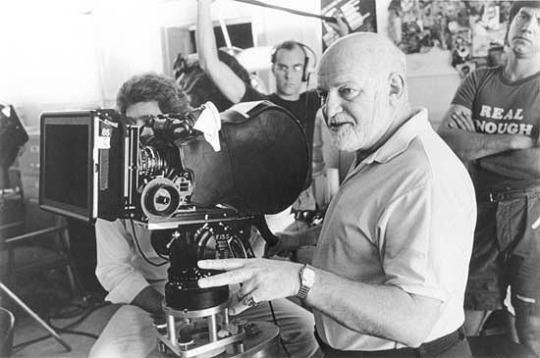
1926 – John Schlesinger, the English film director, was born on this date (d.2003). He was an unheralded pioneer. Always a daring innovator, Schlesinger was a significant force in introducing homosexual themes into mainstream British and American films.
His early work for the BBC led to his first feature film, Terminus (1961), a documentary set in a London train station. Subsequently, he was selected by producer Joseph Janni to direct a series of films that focused on the restlessness of young people coming of age at the beginning of the "swinging sixties."
Notable for their empathetic treatment of their youthful protagonists, these films featured such rising stars as Alan Bates, Tom Courtenay, and Julie Christie, and include A Kind of Loving (1962), Billy Liar (1963), and Darling (1965).

Schlesinger's first American film, Midnight Cowboy (1969), which won the Academy Award for Best Picture despite an "X" rating, focuses on a relationship between two men, a male hustler (Jon Voigt) and an ailing con artist (Dustin Hoffman). It also features a disturbing scene in which the hustler beats up a client. Midnight Cowboy was kicked to pieces by the critics for being too Gay, and by militant Gays for not being Gay enough.

Released in 1971, only four years after homosexual acts between male adults in private were decriminalized in Britain, Sunday Bloody Sunday explores a romantic triangle with a different twist: an older gay man (Peter Finch) and a divorcee (Glenda Jackson) become rivals for the sexual attention of a younger man (Murray Head).
A later film, The Next Best Thing (1999), takes a wry look at a one-night stand (and an ensuing pregnancy) between a gay man (Rupert Everett) and a straight woman (Madonna).
Schlesinger never made a secret of his homosexuality, and he lived quite openly with his partner Michael Childers from the late 1960s until the end of his life in 2003.
He became publicly "out," however, when, in 1991, Sir Ian McKellen, the first openly gay individual to be knighted by the British monarchy, was attacked in a public letter from filmmaker Derek Jarman for accepting the honor. Schlesinger was one of the dozen British gay and lesbian artists who signed a respectful response in McKellen's defense.
Schlesinger died on July 25, 2003 in Palm Springs, California, following a prolonged illness.

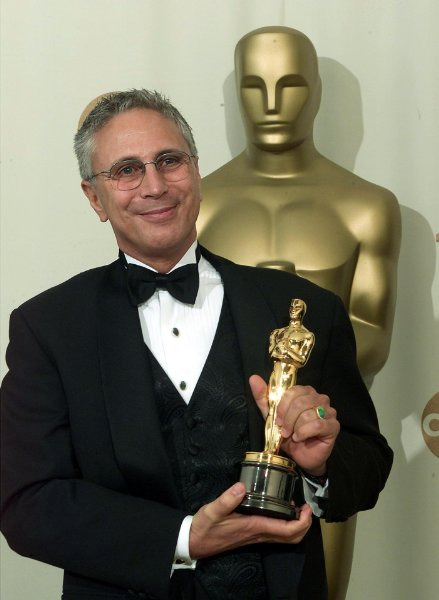
1938 – American composer of symphonies, chamber works, choral settings, operas, and film scores, John Corigliano has created some of the most moving music inspired by the AIDS epidemic.
Corigliano was born in New York into a highly musical family. His father was a distinguished violinist who was concertmaster of the New York Philharmonic from 1943 to 1966, while his mother was an accomplished pianist.
He is perhaps best known for his score to the film The Red Violin (1997), for which he received an Academy Award; his music for the opera The Ghosts of Versailles (1991), which was commissioned and premiered by the Metropolitan Opera, New York; and for his Symphony No. 1 (1990).
Symphony No. 1 was inspired by the loss of many of Corigliano's friends to AIDS. Commissioned by Sir Georg Solti and the Chicago Symphony Orchestra, the symphony is notable for its large scale and dark mood. Although inspired by the devastation of AIDS, the symphony also stands on its own as a piece of music devoid of specific historical context.
Its third movement, "Guilio's Song," includes a cello solo based on a theme improvised by Corigliano and his cellist friend Guilio Sorrentino. This third movement inspired the separate, briefer chaconne Of Rage and Remembrance (1993), which was commissioned by gay men's choruses in Seattle, New York City, and San Francisco.
Scored for chorus and soloists (mezzo-soprano, boy soprano, two tenors, and two baritones), this work is set to poetry about loss by poet and playwright William Hoffmann and farewells to various friends lost to AIDS; the work concludes with a verse from Psalm 23, "Yea, though I walk through the valley of the shadow of death," sung in Hebrew by a boy soprano.
The vocal score explicitly names friends of Corigliano and Hoffmann who have died of AIDS, and directs the singers to name friends whom they have lost to AIDS as well. Thus the work is not only an occasional piece but also a work in the long, venerable tradition of communal choral lament.
John Corigliano, who is openly gay, lives with his partner, composer Mark Adamo in New York City; the two were legally married in California by the conductor Marin Alsop in August 2008.


1957 – Max Wolf Valerio, born in Heidelberg, West Germany, is a poet, memoir writer, essayist and actor. He has lived for many years in San Francisco, California. He is of Kainai (Blackfoot/Blood), Sephardic Jewish Converso, and Northern European descent.
Valerio's 2006 memoir The Testosterone Files is one of his most prominent pieces of writing. It describes his transformation and experiences as a trans man. He also writes and performs poetry, and acts on both film and stage.
Max was born in a United States Army hospital in Heidelberg Germany and then, traveled to San Francisco after a year and a half. They lived on the Presidio Army base while there before traveling on after another 18 months. Valerio lived in many states including Maryland, Washington, California, Kansas, Oklahoma, and Colorado, as well as in Canada, and again in Germany as a child and teenager.
Growing up Max Valerio had fair skin, light eyes and light hair and was often confused for Russian, half-Chinese, Hungarian or as a white American. Max Valerio’s mother came from Black Foot descent, specifically from the Kainai or Blood Band reserve. He grew up on the Blood Reserve in Alberta, Canada. Max Valerio was a part of the American Indian Movement and participated in marches and visited the Pine Ridge Reservation when it was under siege by the F.B.I after the Wounded Knee Occupation.
Growing up Valerio had a hard time relating to girls. He felt that he did not fit in because of his masculine nature and at times would offer to play male roles but it would not approved by the female counterparts that he was attempting to play with. He decided to identify himself as a lesbian as a teen because it made the most sense to him at the time. Max Valerio transitioned in 1989 from female to male.


1970 – Kevin Allison, born in Cincinnati, Ohio, is a comedic writer and actor. He is perhaps best known as a writing and performing member of The State on MTV. Popular sketches on the show starring Allison include "Taco Man," "Mr. Magina", "Dreamboy", and "The Jew, the Italian, and the Redhead Gay". Allison came out as gay to the national media at 24 when The State began airing in 1994.
Allison created and hosts the uncensored weekly audio podcast RISK!, a storytelling show "where people tell true stories they never thought they'd dare to share." RISK! is also a monthly live show in New York City and Los Angeles. Allison tours to other cities with the show on a consistent basis as well. The live show debuted in August 2009 at Arlene's Grocery in New York and moved to Joe's Pub in October with guests like Margaret Cho, Rachel Dratch, Michael Ian Black, Andy Borowitz, and Janeane Garofalo dropping their usual material for a night to tell unusually honest and often embarrassing stories.
Allison's most recent film and TV appearances include Reno 911!: Miami, The Ten, Wedding Daze, VH1's Best Week Ever, IFC's Comedy Bang Bang and HBO's Flight of the Conchords. He has written for TV and for production companies like JibJab and Blue Man Group. Allison has taught sketch comedy and storytelling classes at New York University, the People's Improv Theater in New York City (where he also served as artistic director), and the Philly Improv Theater in Philadelphia.


1978 – John Tartaglia American actor, dancer, puppeteer, and singer. Tartaglia was born in Maple Shade, New Jersey, U.S.. He joined Sesame Street's puppetry team at the age of 16 part-time, performing as a right hand and many minor characters, including Phoebe and being the backup for Kevin Clash's Elmo. He performed Ernie for the second season of Play with Me Sesame and Oscar the Grouch for Sesame Street 4D. He became a full time part of Sesame Street at the age of 18.

Tartaglia created and puppeteered the roles of Princeton (the recent college grad) and Rod (the closeted Republican-investment banker) in the Tony Award-winning Broadway musical Avenue Q, which opened July 31, 2003. For the roles, he was nominated for the Tony Award for Best Leading Actor in a Musical in 2004. He left the cast on January 30, 2005.
Tartaglia appeared in 2004 at the 14th annual Broadway Bares, which was a great success raising $525,000 to benefit Broadway Cares/Equity Fights AIDS.
His partner is fellow actor and singer Michael Shawn Lewis.
He played the roles of Pinocchio and the Magic Mirror in Shrek the Musical, another musical in which Tartaglia also performed all of the puppets in the show. After a try-out in Seattle the show landed in New York at The Broadway Theatre beginning in December 2008. He performed in the show until August 2009 and was replaced by Wicked star, Robb Sapp. He returned to the show in December 2009 where he stayed until its closure on January 3, 2010.
He appeared in his own television series for Playhouse Disney called Johnny and the Sprites as creator, executive producer, and star. While the episodes began as only 5-minute interstitials, the show began a full 30-minute series on January 13, 2007. The show began filming Season 2 during mid-2007.
Tartaglia hosts a radio show on Sirius XM On Broadway called Sunday Funday with John Tartaglia.


1982 – Ralph Shortey is an American convicted felon and former politician and businessman. A member of the Republican Party, he was elected to the Oklahoma Senate in 2010, defeating several challengers in primary elections, re-elected in 2014 and served his term until 2017. Shortey advocated 'family values' during his campaigns and was known for his imposing body structure, standing 6 feet 6 inches, and weighing 315 pounds.
On March 16, 2017, Shortey was charged by the Cleveland County District Attorney with three felony counts – soliciting a minor for prostitution, prostitution within 1,000 feet (300 m) of a church, and transporting someone for prostitution – after he was caught with a 17-year-old boy in a motel room in Moore, Oklahoma. Police said that they discovered sexually explicit text messages between the duo in which Shortey called the teen "baby boy" and offered him cash in exchange for sexual acts.
Shortey turned himself in the same day and was released on a $100,000 bond. The FBI and U.S. Secret Service in Oklahoma City both confirmed that they had joined the investigation into Shortey, and the FBI conducted a search of his home. The age of consent in Oklahoma is 16, but, under state law, engaging in prostitution with anyone under 18 is illegal.
After the reports emerged, but before charges were filed, the Oklahoma Senate unanimously voted to strip Shortey of a variety of privileges, including his parking space, office, and positions on committees, although he retained his seat, ability to vote, and salary. A number of Oklahoma officials from both parties called upon Shortey to step down, including Governor Mary Fallin. Shortey resigned from office on March 22, 2017—six days after being charged.On September 5, 2017, a federal grand jury indicted Shortey on four federal sex trafficking and child pornography charges, involving both the March incident and videos that Shortey is accused of distributing from his smartphone in 2012 and 2013. Shortey pleaded not guilty to these charges. After the federal charges were announced, the Cleveland County district attorney dropped the state charges. A federal jury trial had been scheduled for December 2017.
On November 19, 2017, Shortey reached an agreement to plead guilty on November 30 to one count of child sex trafficking; the prosecutor agreed to have the child pornography counts removed. Shortey was jailed immediately after pleading guilty on November 30 and faced a sentence of at least 10 years in prison, with Judge Timothy D. DeGiusti to decide in 2018. In early December 2017, police released their video of Shortey's arrest at a motel where he was found with the 17-year-old male prostitute. In June 2018, prosecutors revealed in a sentencing memorandum that Shortey had sex twice with the victim in the year before they were found together at the hotel.
Jailed since his guilty plea, Shortey was sentenced in Oklahoma City federal court on September 17, 2018, to a total of 15 years in prison, and 10 years of supervised release. His attorney, who said the sentence was fair, has requested that Shortey serve it at a facility in Texas with a sex offender rehab program.

1997 – An episode of The Simpsons called 'Homer’s Phobia' airs, exploring gay themes.

2007 – According to a poll, 80% of Italians supported proposed legislation that will grant property and inheritance rights to registered same-sex cohabitees despite Vatican opposition to the laws.


20 notes
·
View notes
Text

131 notes
·
View notes
Note
5, 8, & 30 for the Digbus!
- @zeebreezin
5: If he was to give a speech, Digby would absolutely kill it. He's pretty damn good at bullshitting and lying to people, but if it was something he actually cared about, he'd probably do worse than you'd think
8: Digby sees puzzles as distractions towards a greater goal, an obstacle. He wouldn't like to solve one unless there was a reason to solve it.
30: Horatio Digby would die. And a name would surface from the past with renewed vigour.
1 note
·
View note
Text
The Coronation Procession
This week I spent a few days in London, so I decided to walk the route that the newly coronated King Charles III and Queen Camilla will take, called the Coronation Procession! The Kings Procession, before the service is this route, just in reverse. I took pictures of the highlights of the route, it will definitely be something to look back on in the future!

Westminster Abbey
Founded in 960 and consecrated in 1065, Westminster Abbey, has seen the coronations of 39 English and British monarchs and 16 royal weddings and is the burial site for 18 English, Scottish and British monarchs.

Whitehall, Downing Street and Horse Guards Parade
Whitehall is recognised as the centre of the Government of the United Kingdom and is lined with numerous departments and ministries, including the Ministry of Defence, Horse Guards and the Cabinet Office. The Palace of Whitehall previously occupied the area and was the residence of Kings Henry VIII through to William III, before it was destroyed by fire in 1698; only the Banqueting House has survived. As well as government buildings, the street is known for its memorial statues and monuments, including the UK's primary war memorial, the Cenotaph and the Women of World War Two memorial.
Downing Street was built in the 1680s by Sir George Downing. For more than three hundred years, it has held the official residences of both the First Lord of the Treasury, the office now synonymous with that of the Prime Minister, and the Second Lord of the Treasury, the office held by the Chancellor of the Exchequer. The Prime Minister's official residence is 10 Downing Street, and the Chancellor's official residence is Number 11. The government's Chief Whip has an official residence at Number 12. In practice, these office-holders may live in different flats; the current Chief Whip actually lives at Number 9.
Horse Guards Parade is a large parade ground off Whitehall. It is the site of the annual ceremonies of Trooping the Colour, which commemorates the monarch's official birthday, and the Beating Retreat. Horse Guards Parade was formerly the site of the Palace of Whitehall's tiltyard, where tournaments (including jousting) were held in the time of Henry VIII. It was also the scene of annual celebrations of the birthday of Queen Elizabeth I. The procession will go past the entrance, not onto the parade ground.

Trafalgar Square and the Equestrian Statue of King Charles I
The square is named after the Battle of Trafalgar, a British naval victory in the Napoleonic Wars with France and Spain that took place on 21 October 1805 off the coast of Cape Trafalgar, southwest Spain. In the centre of the square is Nelson's Column built to commemorate Vice-Admiral Horatio Nelson's decisive victory at the Battle of Trafalgar over the combined French and Spanish navies, during which he lost his life. The monument was constructed between 1840 and 1843 to a design by William Railton. The statue of Nelson was carved from Craigleith sandstone by sculptor Edward Hodges Baily. The four bronze lions around its base, designed by Sir Edwin Landseer, were added in 1867.
The equestrian statue of Charles I is a work by the French sculptor Hubert Le Sueur, probably cast in 1633. It is considered the central point of London. Its location at Charing Cross is on the former site of the most elaborate of the Eleanor crosses erected by Edward I (one of 12, to commemorate his late wife, put in location throughout the route of her funeral procession stops back to London). The statue faces down Whitehall towards Charles I's place of execution at Banqueting House. It was commissioned by Charles's Lord High Treasurer Richard Weston for the garden of his country house in Roehampton, Surrey. Following the English Civil War the statue was sold to a metalsmith to be broken down, but he hid it until the Restoration. It was installed in its current, far more prominent location in the centre of London in 1675, and the elaborately carved plinth dates from that time.

Admiralty Arch
Admiralty Arch was commissioned by King Edward VII in memory of his mother, Queen Victoria, and designed by Aston Webb, who also designed the Victoria Memorial and the new façade of Buckingham Palace at the other end of the Mall. It once served as residence of the First Sea Lord and was used by the Admiralty.



The Mall, St James Palace and Clarence House
The Mall is the long red coloured road joining Admiralty Arch and Buckingham Palace. It has seen several huge celebrations such as Victory in Europe Day (8 May 1945), lots of state visits, parades and Jubilee celebrations. When the royal family stand on the balcony of Buckingham Palace, The Mall is packed from top to bottom of vast crowds. The surface of The Mall is coloured red to give the effect of a giant red carpet leading up to Buckingham Palace. This colour was obtained using synthetic iron oxide pigment.
St James's Palace is the most senior royal palace in London. It is the ceremonial meeting place of the Accession Council, the office of the Marshal of the Diplomatic Corps, as well as the London residence of Princess Anne, the Princess Royal and her husband, The Duke and Duchess of Edinburgh, Princess Beatrice and Princess Alexandra. The Proclamation Gallery (pictured above) is a part of St James's Palace, and it is used after the death of a reigning monarch. The Accession Council meets to declare the new monarch. Once the monarch has made a sacred oath to the council, the Garter King of Arms steps onto the Proclamation Gallery, which overlooks Friary Court to proclaim the new monarch.
Clarence House currently serves as the London residence of King Charles III and Queen Camilla. It has been Charles's residence since 2003. From 1953 until 2002 it was home to Queen Elizabeth The Queen Mother, and before her, it was the official home of her daughter, Princess Elizabeth, the future Queen Elizabeth II.

The Queen Victoria Memorial
The Queen Victoria monument and surrounding gardens were created between 1904 and 1924. The main statue was unveiled by King George V. As well as Victoria, there are statues representing courage, constancy, victory, charity, truth and motherhood. In summer the flower beds are filled with geraniums, spider plants, salvias and weeping figs. Scarlet geraniums are used to match the tunics of The Queen's Guard at Buckingham Palace. In winter time the beds are filled with about 50,000 yellow wallflowers and red tulips.

Buckingham Palace
Buckingham Palace has served as the official London residence of the UK’s sovereigns since 1837. Buckingham Palace has 775 rooms. These include 19 State rooms, 52 Royal and guest bedrooms, 188 staff bedrooms, 92 offices and 78 bathrooms. King George III bought Buckingham House in 1761 for his wife Queen Charlotte to use as a comfortable family home close to St James's Palace, where many court functions were held. Buckingham House became known as the Queen's House, and 14 of George III's 15 children were born there. Queen Victoria was the first sovereign to take up residence in July 1837 and in June 1838 she was the first British sovereign to leave from Buckingham Palace for a Coronation. Her marriage to Prince Albert in 1840 soon showed up the Palace's shortcomings. A serious problem for the newly married couple was the absence of any nurseries (for her nine children) and too few bedrooms for visitors. The only solution was to move the Marble Arch - it now stands at the north-east corner of Hyde Park - and build a fourth wing, thereby creating a quadrangle. The cost of the new wing was largely covered by the sale of George IV's Royal Pavilion at Brighton.
I then walked past the Royal Mews, where the Gold State Coach is being prepared for the Coronation. Then onto Hyde Park, then Kensington Gardens and finally Kensington Palace, which is the official London residence of the Prince and Princess of Wales and their children, the Duke and Duchess of Gloucester and the Duke of Kent. I then treated myself to a scrummy yet expensive piece of lemon cake from the Prada cafè in Harrods 🍰😋
information from wikipedia, royal parks and the royal family website
#king charles coronation#coronation procession#king’s procession#king charles iii#queen camilla#british royal family#on that day I did 33k steps 🫠
100 notes
·
View notes